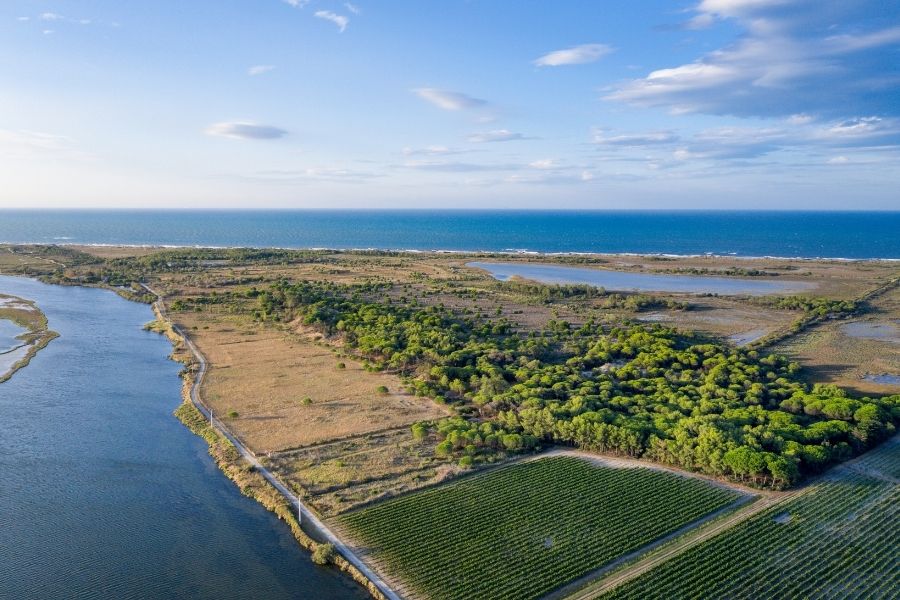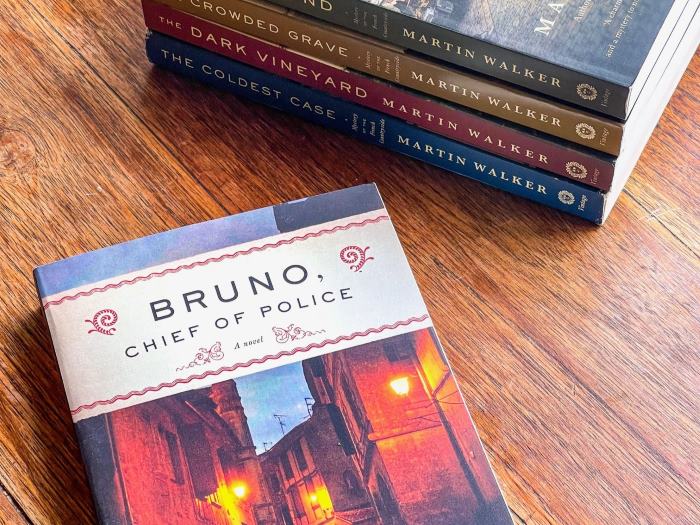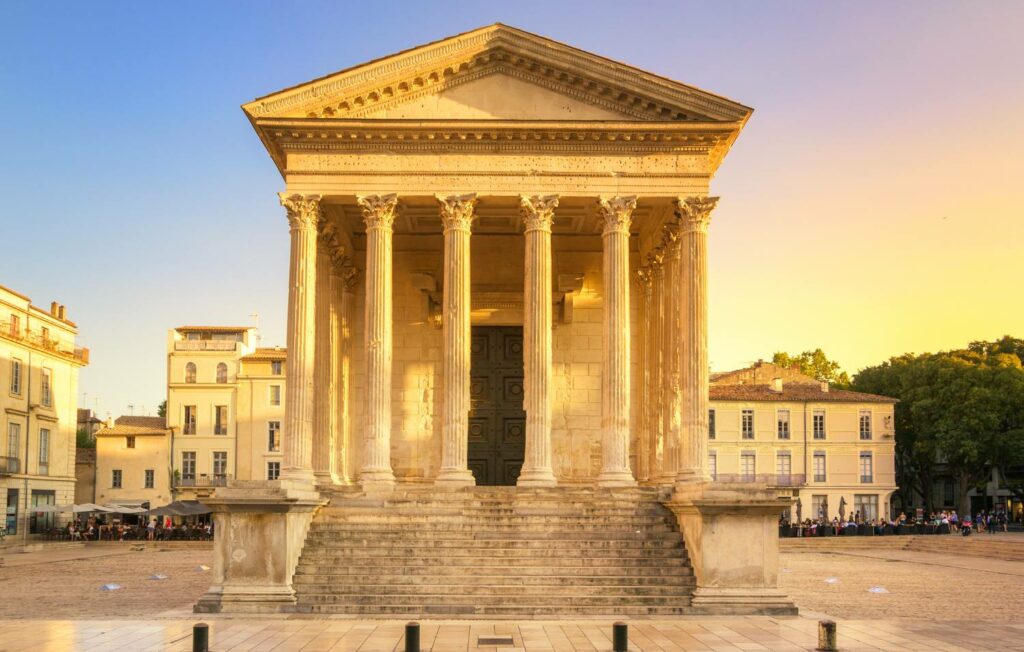Last update:
What is Normandy famous for?

Everyone knows Normandy is famous for its place in WW2 history. Just the word Normandy evokes strong images of Allied troops storming the French coastline, especially for Americans who remember the young men fighting on Omaha beach. But what else is Normandy famous for? Charming villages, green countryside, and magnificent history is the answer. Although it is less thought of than the beautiful city of Paris, the glitz and glam of the French Riviera, the romantic aura of Provence, or the wine of Bordeaux, there is much more to discover beyond its reputation for war history. It even rivals those places mentioned with its culture and sites to visit. Read along and you will learn why Normandy should be on everyone’s bucket list.
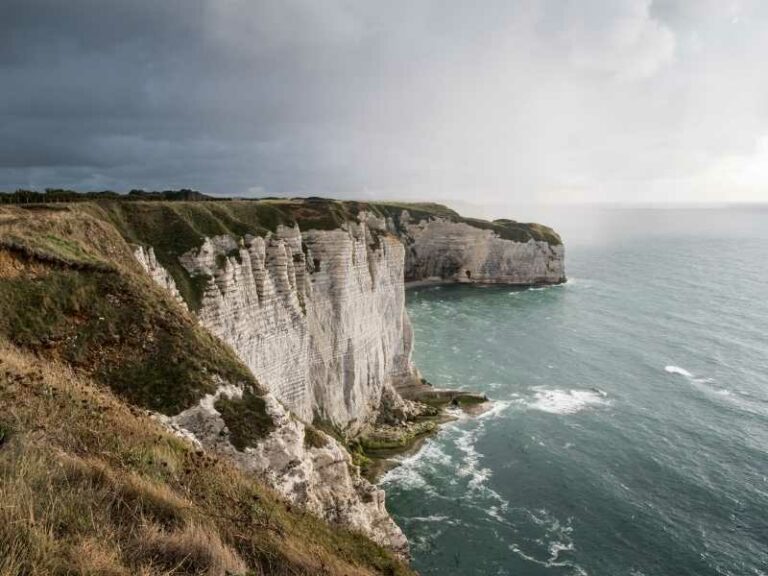

1. Viking History
The story of the origins of Normandy will give you an idea of how important this region is to the history of France. It was founded by Rollo, the leader of a group of Viking raiders, who made an agreement with the King of France to receive land in exchange for his loyalty to the King to bring peace. He was named the Duke of this land and it was called “Normandy”, which meant “North man’s land”. His bloodline produced powerful figures who controlled the region for centuries to come and was also the birthplace of the most famous one, William the Conqueror, who became King of England.

2. Mont-Saint-Michel
The crown jewel of Normandy is the Mont-Saint-Michel. Its astonishing architecture rising from the waters of the bay make it the 3rd most visited monument in France, just behind the Eiffel tower and the Palace of Versailles. You can’t not feel excitement when this site first comes into view from a distance as you are arriving. It was built in 708 by the Bishop of Avranches, Saint-Aubert, after having a vision of the archangel Saint-Michel three times in his dreams. The best parts of visiting here are exploring the Abbey, walking on the ramparts, taking in the views, and wandering the village. The best time to visit the Mont-Saint-Michel is in the morning or evening, avoiding the mid-day crowds

3. Normandy American Cemetery
For Americans, Normandy is most famous for the American Cemetery where 9,388 US soldiers who fought and died liberating France are buried. Travelers from all over the world come here to pay homage to the brave young men who gave their lives in the name of freedom for Europe. Norman people hold a strong appreciation for American visitors because of the sacrifices our soldiers made to help them. The solemn site which is located above the bluff of Omaha beach consists of thousands of white marble crosses that mark the graves, several monuments memorializing the war, and an informative visitor center. It is a must see for anyone who wants a deeper understanding of war.

4. World War 2 battle sites
There is perhaps no better place in the world to learn about WW2, and war in general, than the Normandy WW2 sites. The Battle of Normandy was the most significant in the history of the war and the Allied victory here was the turning point for the Allies. Some must see sites for understanding the war are Omaha beach, Pointe du Hoc, Longues-sur-Mer, Arromanches-les-Bains, Utah beach, and Sainte-Mere-Eglise. Visiting these sites is best with an expert WW2 history guide so you can learn the heroic tales behind them and details that garner a deeper understanding and appreciation for their roles in the war rather than just observing the many relics of the war at the sites. There are many other off-the-beaten path sites to discover as well that history buffs would truly appreciate.

5. The Bayeux Tapestry
The Bayeux Tapestry Museum contains an important historical artifact. Enclosed in a glass case is the carefully protected handwoven tapestry which depicts the history altering events of the Norman Conquest of England at the hand of Normandy’s most famous figure William the Conqueror. At 70 meters long and 900+ years old, it still has secrets to tell including who made it and how it survived so long before being taken into the care of a museum. The coastal town of Bayeux where it is located is worth a visit on its own and is a great location to stay for those wishing to see the WW2 beaches.

6. Cider
While the South of France is known for wine, one of the things Normandy is most famous for is its cider. It started when King Charles IX of France ordered the axing of all vineyards in the region in the 16th century to boost agriculture and cattle raising. Seafarers from Dieppe who sailed to Africa and Spain enjoyed the cider being traded there and brought back the best seedlings of pear and apple trees. Since cattle could happily graze among the trees, they were planted in masses and Normandy became a chief harvester of apples and the farmers would primarily make cider from the fruit. Normandy is now the number one producer of cider in the world and they make it the best. Another famous drink of Normandy is Calvados which is an apple based brandy. Stopping at a cider producer for a tour and tasting to learn about these amazing drinks is one of the best things to do in Normandy. Domaine Dupont, Christian Drouin, and Chateau Breuil are a couple great ones to visit.
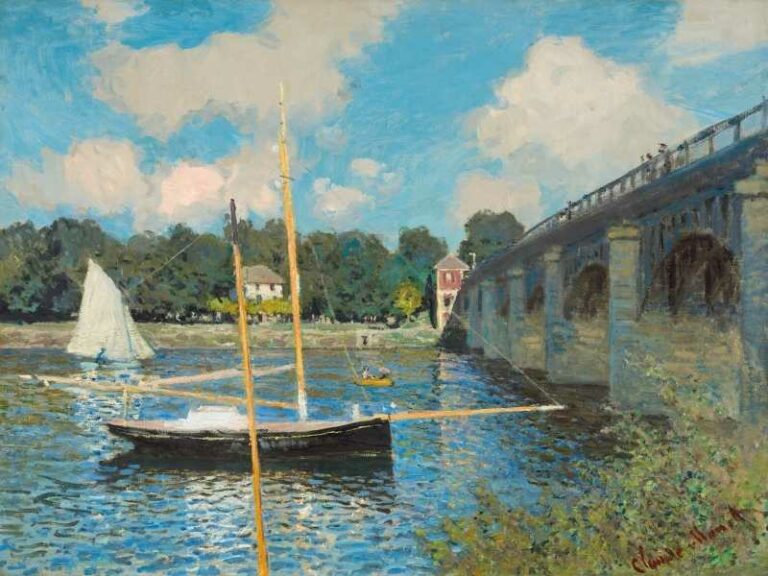
7. Impressionist Art
Believe it or not, Normandy is the birthplace of Impressionism. Claude Monet grew up in Le Havre, a seaside town in Normandy. When he was a teenager strolling the beach he met Eugene Boudin who would also become a famous painter. He introduced young Monet to painting outdoors with oil paints, a style called “en plein air”. Monet later claimed that in this moment “it was as if a veil was torn from my eyes; I had understood. I grasped what painting could be.” In his later years he settled in the Normandy countryside in the town of Giverny where he purchased his home, built his beautiful gardens, and painted till his dying day. Claude Monet’s house and gardens are preserved just as they were during his life by the Foundation Monet and are a must see in Normandy for any art lover.
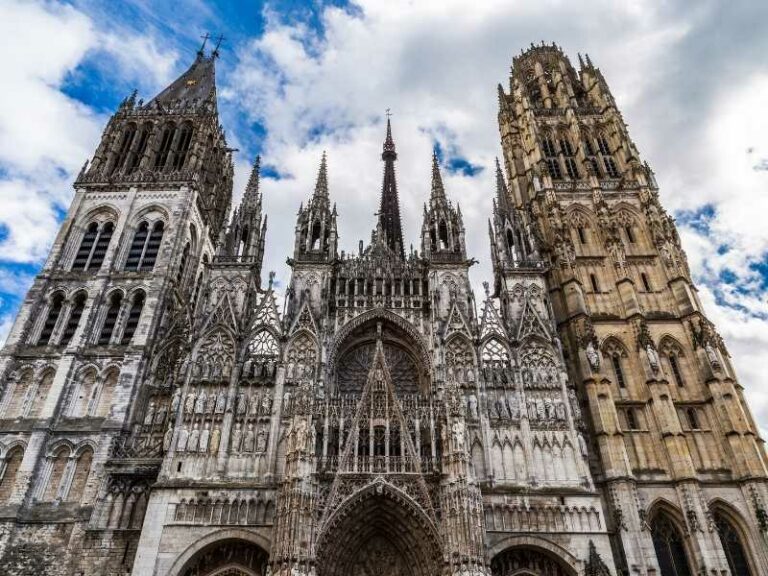
8. Rouen Cathedral
The Cathedrale Notre-Dame de Rouen is nothing short of spectacular in historical significance and sight. It is also the resting place of three Dukes of Normandy: Rollo, William Longsword, Richard the Lionheart, and many other important figures. It was also famously painted by Monet in his Rouen Cathedral series. It stands out being the tallest cathedral in France with its 3 distinct towers, each constructed in a different style. The most intricate tower is called the Tour de Beurre translating to “butter tower” with a story behind it. The construction of this tower was made possible thanks to an Archbishop who had the unique idea of allowing the people of Rouen to consume butter during Lent only if they made a donation to the church. Since butter is a staple ingredient in French cuisine, they happily paid penance each Lent and after 22 years the construction paid for by this butter tax was completed.


9. Rouen
Rouen is one of the best cities in Normandy and a must visit for many reasons. It is the capital city after all. There are around 2,000 half timbered buildings in the downtown area, charming you as you walk down the stone paved streets and peruse the many shops, cafes, and restaurants. For things to do in Rouen, there is the Musee des Beaux Arts which boasts a wonderful impressionist art collection. There are many other museums to see also including the Joan of Arc museum and a church dedicated to her in the town square where she was burned at the stake. Aside from the Rouen cathedral already mentioned, there is also the Saint-Ouen abbey and the St Maclou church with the cryptic medieval ossuary attached worth visiting called the Aitre St Maclou.

10. Honfleur
The loveliest port on the Seine estuary is Honfleur. The Vieux Bassin or “Old Dock”, is one of the most picturesque areas, with sailboats anchored in the harbor, cobbled streets, slate-grey facades, and dozens of restaurants with outdoor terraces; perfect for people watching. For decades artists such as Monet, Courbet, Cals, Boudin, Bazille, Sisley and Jongkind have flocked to paint here. After taking a walk along the port, you can wander through the many charming streets and shops of local artisans and vendors. The all wood Saint-Catherine’s church in the center of town is from the 15th century and inside resembles the hull of a boat since it was constructed by the many shipbuilders that resided here. A great activity is to take a short walk uphill to “Mont Joli” for a panoramic view of Honfleur and the close by Le Havre. A nice time to visit is on a Saturday morning as they have one of the best markets in France that day.

11. Chateaus
Normandy is famous for its many medieval chateaus. Our favorite is the Chateau de Fontaine-Henry. Not only is it built in spectacular Gothic and Renaissance style, but the inside is also filled with lavish furniture, paintings, and collections of souvenirs passed down for hundreds of generations. The Chateau has been in the same family since it was built in the 15th century. Sometimes the owner himself treats visitors to tours and tells stories of its history. Other notable castles are those of William the Conqueror: Chateau Falaise and Chateau Caen, and Chateau Saint Germain-de-Livet which is a colorful castle that looks like it was picked straight out of a fairytale.
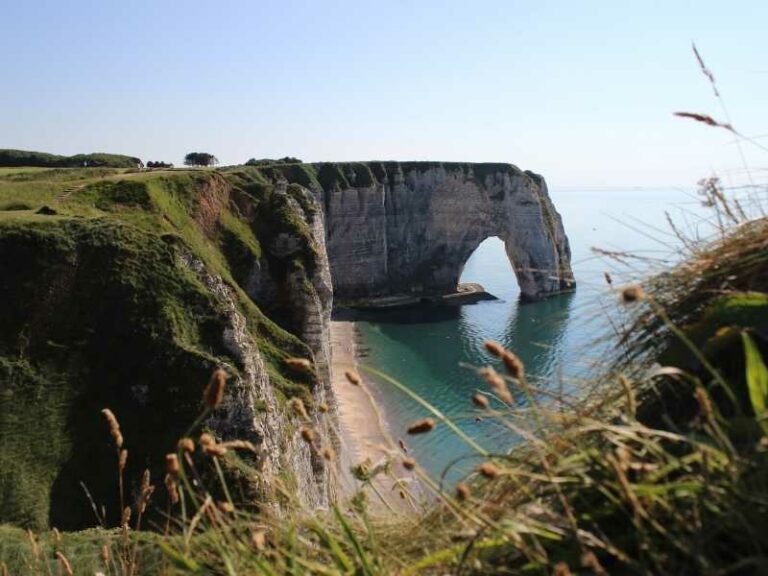
12. Cliffs of Etretat
Made popular by many screensavers on our computers, the white stone Cliffs of Etretat are known around the world. Below the cliffs is a little Normandy beach town called Etretat which legend has it that it was founded by Vikings. It became popular in the 19th century when it went from a traditional fishing village to a go-to seaside resort. From the beach, you can walk up a path to the top of the cliffs to get magnificent views of the arches, the sea, and the town. A stay here could be a great thing to do in Normandy for families as well.

13. Cheese
Normandy is famous for having 4 of France’s most popular cheeses made in its region. Camembert, Livarot, Pont-l’Evêque and Neufchâtel. Of the 4, Camembert is the most well-known. It is similar to Brie but with more flavor, and smell! When in Normandy you must try a platter with an oven baked Camembert served with bread, veggies, or chips for dipping, alongside some charcuterie, and some cider to wash it down.

14. Bayeux
Bayeux is most famous for its large gothic Cathedral and the Bayeux Tapestry museum but there is more to enjoy in this small coastal town. With so many WW2 sites within an hour or less of driving, it is the perfect place to stay for someone who wants to experience those sites and is a great home base for a tour. It was also one of the only towns in Normandy to escape the destruction of Allied bombings that were meant to push the Germans out and was also the first liberated city of France during the D-Day landings.

15. Deauville
In the 1860’s, Deauville became a beautiful resort town for wealthy Parisians to vacation in the summer. Fancy hotels, horse racing, polo, casinos, and a boardwalk all popped up on the Normandy coast and attracted everyone from world famous movie stars to politicians and aristocrats. It is Normandy’s version of the French Riviera. It is not as popular as it was in its heyday, however, it is still one of the best beaches in Normandy, loved by its visitors, a great place to relax, and known for photographs of its colorful umbrellas that dot the beaches for relief from the sun.
Next Read: Normandy Map & Guide – Must-See Places, Food, and Travel Tips
To experience the highlights of Normandy from this article, you can join us on a 6 day tour of the region starting from Paris with an expert local guide and a small group of like-minded tourists to make friends and memories along the way. Click here to see our tour: https://tripusafrance.com/normandy-tour/
Want to visit to Normandy, France?
Check out our Normandy small group tour!




